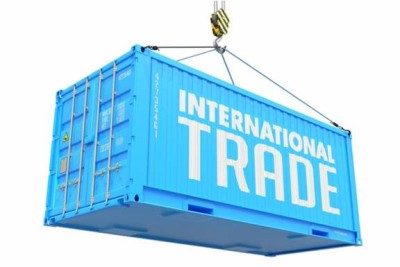By Paul Fudacz, Senior Associate Attorney
Utilization of free trade agreements can be an important part of a company’s efforts to gain an advantage in the global marketplace by reducing tariffs and other trade barriers when dealing with business partners located within free trade area. However, it is critical that before a company attempts to take advantage of the benefits of a free trade agreement that they understand the risks, as well as the benefits before proceeding.
A Free Trade Agreement (FTA) is a formal undertaking negotiated between two or more signatory countries in order to reduce, or eliminate, barriers to trade. This agreement is inclusive of tariffs, as well as quotas and fees on goods and services traded within the signatory countries in order to give each country expanded access to each other’s markets. Frequently the negotiation process is quite cumbersome, and can carry on for several years without reaching a conclusion. In addition, the negotiations are frequently not limited to traditional trade areas such as tariffs and quotas, but can also include agreements involving improvement or preservation of the environment, labor issues, and intellectual property protection.
There are three basic types of FTA’s; unilateral, bilateral, and multilateral. Unilateral agreements are not “agreements” in the classic sense, as they are not reciprocal, but instead represent “one way” trade preferences granted by one country, (usually a developed country), to certain developing countries, called “beneficiary” countries. The preference is typically in the form of allowing duty free treatment to particular products produced and exported from the beneficiary countries. In the U.S. the best example of a unilateral trade agreement is the Generalized System of Preferences, or “GSP”.
Bilateral agreements are trade agreements negotiated between two countries, or two blocs of countries. To date, the U.S. has concluded several bilateral agreements inclusive of more recent agreements with Chile, Colombia and South Korea. Multilateral agreements are agreements negotiated between three or more countries. Examples include the North American Free Trade Agreement (NAFTA) and the Central American-Dominican Republic Free Trade Agreement (CAFTA-DR). In addition, the U.S. has been negotiating two additional major FTA’s – the Trans-Pacific Partnership (TPP), which would include the U.S., Brunei, Japan, Malaysia, New Zealand, and Vietnam, and the Transatlantic Trade and Investment Partnership (TTIP) which would be between the U.S and the European Union.
As mentioned, while FTA’s offer trading partners in their respective free trade area increased access to each other’s markets in the form of reduced tariffs and other trade barriers, there are often complex compliance requirements associated with utilizing a given trade agreement. FTA’s universally require that in order to be accorded trade preferences, the goods traded within the FTA area must meet certain “rules of origin”. Rules of Origin are a critical, and often tedious, part of the negotiations of any FTA, and can vary significantly from one FTA to another. In general, they are designed to confer preference on products grown, and/or produced within the territories of the FTA partners, and promote the use of materials and components produced in the FTA territory in the manufacture of goods.
Rules of origin require a minimum percentage of domestic/ FTA regional content in the good under consideration, and vary according to the particular type of commodity, defined according to the good’s Harmonized Tariff System (HTS) classification. Most rules of origin involve three basic concepts; “tariff shift”, “regional value content”, and “Deminimis” non-FTA content. FTA’s employ these concepts to require that meaningful production activities occur within the free trade area and that sufficient percentages of FTA-originating materials and components are used in the production of goods seeking preferential treatment.
Goods that meet the particular rules of origin for their class or kind are deemed to be “originating” goods in the FTA territory, and are subsequently entitled to full FTA privileges. However, determining whether a good meets the particular rules of origin requires a careful analysis, often involving a determination of the costs of production, HTS classification of all material and component inputs, and obtaining written statements from outside suppliers verifying that purchased materials are FTA originating. Also, all records associated with the analysis, including but not limited to bills of material, inventory records and representations from suppliers, must be maintained under the records retention requirements of the various FTAs.
Lastly, claims for trade preferences are frequently audited by the tax or customs authorities in the country of importation. This is necessary because the trade preference granted under an FTA is typically a waiver of tariffs and fees on qualifying goods imported from FTA partner countries, and the authorities in the country of import seek to validate the claims that are causing a reduction in this revenue. Failure of a party to be able to verify that a particular product fully meets the FTA rules of origin can result in the voiding of the preference claim and a charge for retroactive duties and fees. Further fines and penalties can be imposed for falsely certifying goods or for improperly claiming a trade preference.
For these reasons it is critical that all parties involved in the utilization of a FTA understand the applicable rules and requirements, and develop and implement thorough processes and procedures to assure compliance with all FTA requirements.

























